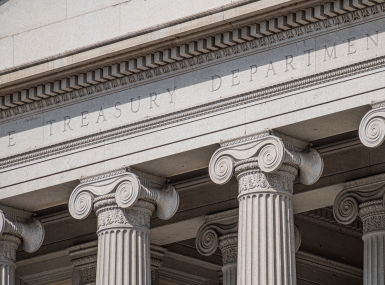Supreme Court alters online sales tax landscape – what comes next?
Key Takeaways
In June, the U.S. Supreme Court ruled in South Dakota v. Wayfair that states and local governments can require internet retailers to collect sales taxes, even if the company has no physical presence in the state. The ruling promises to shake up the sales tax collection landscape, no matter what happens next.
Although Wayfair does not immediately open the door for collection of sales taxes on remote and online purchases by eliminating the “physical presence” standard, it sets a clearer path forward for states aiming to capture tax revenue on purchases from vendors based outside their jurisdiction.
Early signs indicate states will approach this new opportunity in different ways. In South Dakota, the state supreme court must now decide the case without the “physical presence” test in play. Other states such as New Jersey are already considering legislation to take advantage of this new opportunity.
Most states are debating how to use this revenue — for new projects or to lower other tax rates. However, each state decision could be challenged by retailers in state courts. Questions will persist about what requirements might be overburdensome or what constitutes a “nexus” between a vendor and the state. (Some states have argued a certain number of purchases constitutes a venue — $200,000 in sales. Others have made the case even for internet ads or the use of cookies on a webpage as “nexus.”
It could take time for states and local governments to start seeing additional revenue as a result of the Wayfair ruling.
Counties are also likely to be affected as the impact of the court’s decision on states becomes clearer. Many counties employ a local sales or use tax on top of the state’s sales tax rate. Ideally, when a state enforces collection of its sales tax, it will also collect and remit the local government portion. Some states and local governments have already joined the Streamlined Sales and Use Tax Agreement (SSUTA), which helps streamline the collection process for governments and businesses and ensures that local governments capture their share of revenues.
Congress could step in at any point and solve many of these questions. In 2013, the Senate voted in a bipartisan fashion to pass the Marketplace Fairness Act, which codified the SSUTA, allowed for collection of these taxes and laid out protections for small businesses. Congress was close to attaching a similar bill to the March omnibus package, but the final legislation did not include such a provision.
As the dust from Wayfair settles over the next several months, the decision promises to give states and local governments access to previously owed but uncollected taxes. Now, counties should work with both their state legislatures and Congress to ensure that local sales and use taxes are included in any tax-related legislation approved at the state or federal level.
Attachments
Related News

County Countdown – April, 22, 2024
Every other week, NACo’s County Countdown reviews top federal policy advocacy items with an eye towards counties and the intergovernmental partnership.

White House OMB releases final revisions federal Uniform Guidance (2 CFR Part 200)
The White House OMB released final revisions to the federal Uniform Guidance that outline compliance and reporting requirements for federal financial assistance.

Treasury Department releases new obligation guidance for the ARPA State and Local Fiscal Recovery Fund
On March 29, the U.S. Department of Treasury released new FAQs related to their Obligation Interim Final Rule for the ARPA Recovery Fund.
